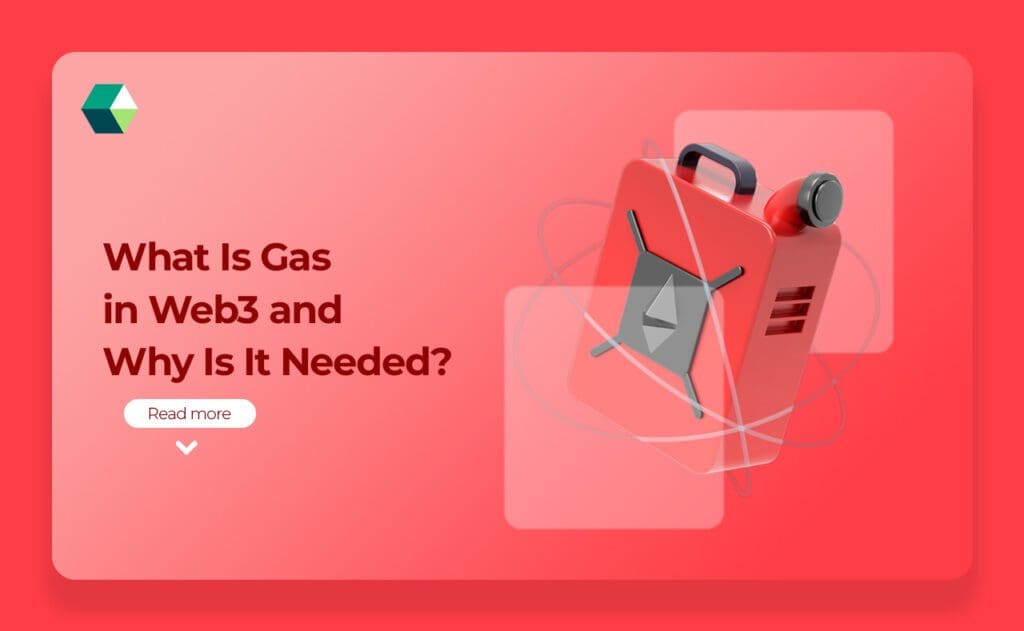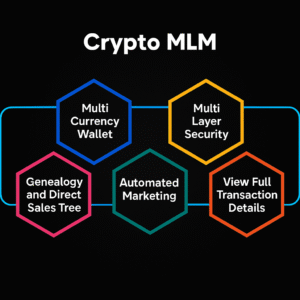
Web3 represents a revolutionary shift from the traditional web to a decentralized web powered by blockchain technology. At the heart of this transformation is the concept of “gas,” a fundamental component of blockchain transactions and operations. In this blog, we will explore what gas is, its importance, and how it affects the Web3 ecosystem, focusing on key aspects like gas fees, gas limit, gas price, and gas optimization.
What Is Gas in Web3 and Why Is It Needed?
In the context of Web3 and Blockchain Technology, gas is a fundamental concept that represents the computational work required to execute transactions and smart contracts on a blockchain network. Gas functions as a unit of measurement for the amount of computational effort necessary to process these operations. Every action on a blockchain, from sending tokens to deploying smart contracts, requires a certain amount of gas, which is paid as a fee.
This fee is crucial for several reasons. It serves as an incentive for miners or validators to include transactions in the blockchain, thus ensuring network security and functionality. Gas fees also help prevent spam and abuse by imposing a cost on every transaction, ensuring that only legitimate operations are processed.
Additionally, gas limits set a cap on the maximum amount of gas a user is willing to spend, which protects against excessive resource consumption and potential exploits. Gas price, on the other hand, determines the cost per unit of gas and can fluctuate based on network demand, affecting transaction speed and prioritization. Effective gas optimization strategies, such as efficient coding practices and utilizing Layer 2 Scaling Solutions , are essential for reducing costs and improving network efficiency. In summary, gas is an integral part of the Web3 Ecosystem , enabling secure, efficient, and fair transactions within the decentralized web.
How Does Gas Work in Web3 Technology?
In Web3 technology, gas functions as a fundamental component that facilitates the execution of transactions and smart contracts on blockchain networks. Gas measures the computational effort required to perform an operation on the blockchain, such as executing a smart contract or processing a transaction. Each operation consumes a certain amount of gas, and users must pay gas fees to cover the cost of this computational work. The process begins when a user initiates a transaction or interacts with a smart contract; they specify a gas limit, which is the maximum amount of gas they are willing to spend. The gas price, set by the user, determines how much they will pay per unit of gas.
Miners or validators then use this gas to prioritize and process transactions. Efficient gas usage is critical for maintaining network performance and avoiding high costs. Techniques such as optimizing smart contract code, utilizing Layer 2 solutions, and batching operations can help reduce gas consumption and improve overall efficiency. Thus, gas plays a crucial role in ensuring that Web3 Technology operates smoothly, securely, and economically within the decentralized web.
Why Is Gas Important for Web3 Transactions?
Gas is fundamentally important for Web3 transactions due to its multifaceted role in ensuring the efficient, secure, and fair operation of blockchain networks. Here’s a deeper look at why gas is so crucial:
-
Incentivizing Network Participants
In blockchain networks, gas fees serve as a primary incentive for miners or validators who are responsible for processing and validating transactions. These network participants use their computational resources to confirm transactions and maintain the blockchain’s integrity. By compensating them with gas fees, the network ensures that these essential tasks are carried out reliably and securely. Without this economic incentive, there would be little motivation for participants to dedicate their resources to maintaining the blockchain.
-
Preventing Spam and Abuse
Gas fees play a critical role in preventing spam and malicious activities on the blockchain. If there were no costs associated with transactions, malicious actors could flood the network with an excessive number of transactions, leading to network congestion and diminished performance. Gas acts as a deterrent by imposing a financial cost on every transaction, which helps to ensure that only genuine, meaningful transactions are processed. This protective mechanism helps maintain the network’s operational efficiency and reliability.
-
Efficient Resource Allocation
Gas is essential for the effective allocation of computational resources within the blockchain network. Every operation, whether it’s a simple transaction or a complex smart contract execution, requires a certain amount of computational work, which is quantified as gas. Users set a gas limit to define the maximum amount of gas they are willing to spend on an operation. This mechanism ensures that network resources are allocated appropriately and helps prevent any single transaction or contract from consuming an excessive amount of resources, which could otherwise lead to performance bottlenecks.
-
Managing Computational Work
The concept of gas also helps manage the computational load of the blockchain. By specifying gas limits, users can control the maximum amount of resources that their transactions or smart contract executions will use. This helps to prevent scenarios where a transaction might inadvertently consume an inordinate amount of computational power, which could negatively impact the network’s performance. Gas limits act as a safeguard to ensure that operations remain within reasonable bounds, thereby maintaining overall network stability.
-
Economic Efficiency and Cost Management
Gas fees are a key factor in determining the cost-effectiveness of blockchain transactions. Users can adjust their gas price to prioritize their transactions based on their urgency and the current network conditions. During times of high congestion, users may increase their gas price to expedite their transactions, while during quieter periods, they might opt for lower fees to reduce costs. This dynamic pricing mechanism allows for a flexible approach to managing transaction costs, making it possible to balance speed and expense according to individual needs.
-
Encouraging Gas Optimization
Gas also drives the optimization of blockchain operations. Developers and users are motivated to employ efficient coding practices and optimization techniques to minimize gas consumption. For instance, efficient smart contract design, combining multiple operations into a single transaction, and leveraging Layer 2 solutions can significantly reduce gas usage. These optimization strategies not only lower costs but also contribute to the overall scalability and efficiency of the blockchain network.
How Do Gas Fees Impact Web3 Applications?
Gas fees significantly impact Web3 Applications by influencing their cost structure, user experience, and overall efficiency. In decentralized applications (dApps) and smart contracts, gas fees are essential for executing transactions and interactions on the blockchain. These fees determine the cost of computational resources required to process and validate operations. High gas fees can deter users from interacting with dApps, especially during periods of network congestion when costs spike, potentially leading to reduced engagement and adoption.
For developers, managing gas fees involves optimizing code and employing efficient practices to minimize costs while ensuring robust functionality. As part of effective Web3 Development Solutions, applications that manage gas fees well can offer more competitive pricing and a better user experience, enhancing their appeal and usability. Conversely, excessive or unpredictable Web3 Gas Prices can create barriers for users and developers, affecting the accessibility and success of Web3 applications. Therefore, understanding and managing gas fees is crucial for maintaining the efficiency, affordability, and overall success of applications within the decentralized web.
Why Do Gas Prices Change in Web3?
How Can You Save on Gas Fees in Web3?
-
Optimize Transaction Timing
Gas fees fluctuate based on network congestion, which can be influenced by factors like time of day and network activity. By using tools like gas trackers or fee prediction services, you can identify periods of lower network demand. Executing transactions during these quieter times can result in significantly reduced gas fees. This strategy involves planning your transactions around the expected gas price trends to ensure you get the best rates available.
-
Set Appropriate Gas Limits and Prices
When initiating a transaction, you have the option to set a gas price that reflects the urgency of the transaction. Setting a higher gas price may expedite processing, but if you’re not in a rush, choosing a lower gas price can save money. Many wallets offer settings to adjust the gas price manually or select a preset option based on current network conditions. Balancing your need for speed with cost considerations can help you avoid paying unnecessarily high fees.
-
Utilize Layer 2 Scaling Solutions
Layer 2 solutions are designed to alleviate the burden on the main blockchain by processing transactions off-chain. Technologies like Optimistic Rollups, zk-Rollups, and state channels handle transactions off the main chain and periodically settle them on-chain. This method aggregates multiple transactions into a single on-chain entry, reducing the overall gas fees required. Adopting Layer 2 Scaling Solutions can be particularly advantageous for frequent or high-volume transactions.
-
Optimize Smart Contract Code
For developers, optimizing smart contract code is crucial for managing gas costs. Efficient coding practices can minimize the computational resources required for execution. This includes reducing redundant operations, optimizing loops and data structures, and minimizing storage use. Tools and techniques for gas optimization can help you write more efficient contracts, thereby lowering gas fees for both developers and users.
-
Batch Transactions
Combining multiple actions into a single transaction can lead to substantial savings. For instance, if you need to perform several operations or interactions with a smart contract, batching them together reduces the number of transactions processed separately. This not only saves on gas fees but also reduces the network load, benefiting all users.
-
Choose Gas-Efficient Platforms
Some blockchain platforms and dApps are designed with gas efficiency in mind. These platforms often employ optimizations or alternative mechanisms to lower gas costs. Researching and selecting platforms that are known for their cost-effective transactions can help you avoid high fees and make your interactions with blockchain technology more economical.
-
Leverage Gas Rebates and Discounts
Certain platforms, exchanges, and dApps offer promotional gas rebates or discounts. Participating in these promotions can provide opportunities to save on transaction costs. Keeping track of available rebates, discounts, or loyalty programs can help you reduce gas fees, especially if you are a frequent user of these services.
-
Stay Informed About Network Upgrades
Blockchain networks frequently undergo upgrades and improvements that can impact gas fees. For example, Ethereum’s transition to Ethereum 2.0 and the implementation of EIP-1559 are designed to improve transaction efficiency and reduce costs. Staying updated on network developments and understanding how they affect gas pricing can help you take advantage of new features and optimizations that could lower fees.
-
Use Gas Tokens
Some blockchains offer gas tokens that can be pre-purchased at lower rates and redeemed for gas when needed. These tokens allow users to lock in gas costs at a lower rate before network congestion drives prices up. Utilizing gas tokens can be an effective strategy if you anticipate high transaction volumes or expect periods of network congestion.
How Can Web3 Users Manage Gas Costs Better?
Web3 users can manage gas costs more effectively by employing several key strategies. First, they should monitor network congestion and choose optimal times for transactions, as gas fees are lower during periods of lower activity. Utilizing gas trackers and fee estimation tools can help identify these times and adjust transaction timing accordingly. Setting appropriate gas limits is crucial; users can balance between paying enough to ensure timely processing and avoiding overpayment by customizing gas prices based on urgency. Employing Layer 2 solutions, such as rollups or state channels, allows for transactions to be processed off-chain, reducing the overall gas costs significantly.
For developers, optimizing smart contract code to be more gas-efficient helps in minimizing the computational resources needed for execution, thus lowering fees. Batch processing multiple transactions into a single operation can also lead to cost savings by consolidating operations and reducing the total gas fees incurred. Additionally, leveraging gas rebates, discounts, or promotional offers from platforms can provide financial relief. Staying informed about network upgrades and advancements in blockchain technology, such as Ethereum 2.0, can offer opportunities to benefit from improved gas efficiency and lower fees. By integrating these strategies, Web3 users can better manage and reduce their gas costs, making their blockchain interactions more cost-effective and efficient.
Why Is Nadcab Labs Best for Web3 Gas Solutions?
Nadcab Labs stands out as a leading provider of Web3 Gas Solutions due to its innovative approach to optimizing gas fees and enhancing blockchain efficiency. The company specializes in developing advanced technologies and strategies that effectively reduce gas costs, making blockchain interactions more economical for users and developers alike. Nadcab Labs employs cutting-edge solutions, such as gas optimization techniques and Layer 2 Scaling Solutions, to streamline transactions and minimize fees. Their expertise extends to smart contract optimization, ensuring that code is designed to be as gas-efficient as possible, thus lowering execution costs.
Additionally, Nadcab Labs offers tools and services that help users monitor and manage gas prices dynamically, allowing for strategic transaction planning and cost control. By staying at the forefront of blockchain technology advancements and protocol upgrades, Nadcab Labs ensures that their solutions are aligned with the latest industry developments. This comprehensive approach not only addresses current challenges related to gas fees but also anticipates future needs, positioning Nadcab Labs as a premier choice for efficient and cost-effective Web3 gas solutions.







